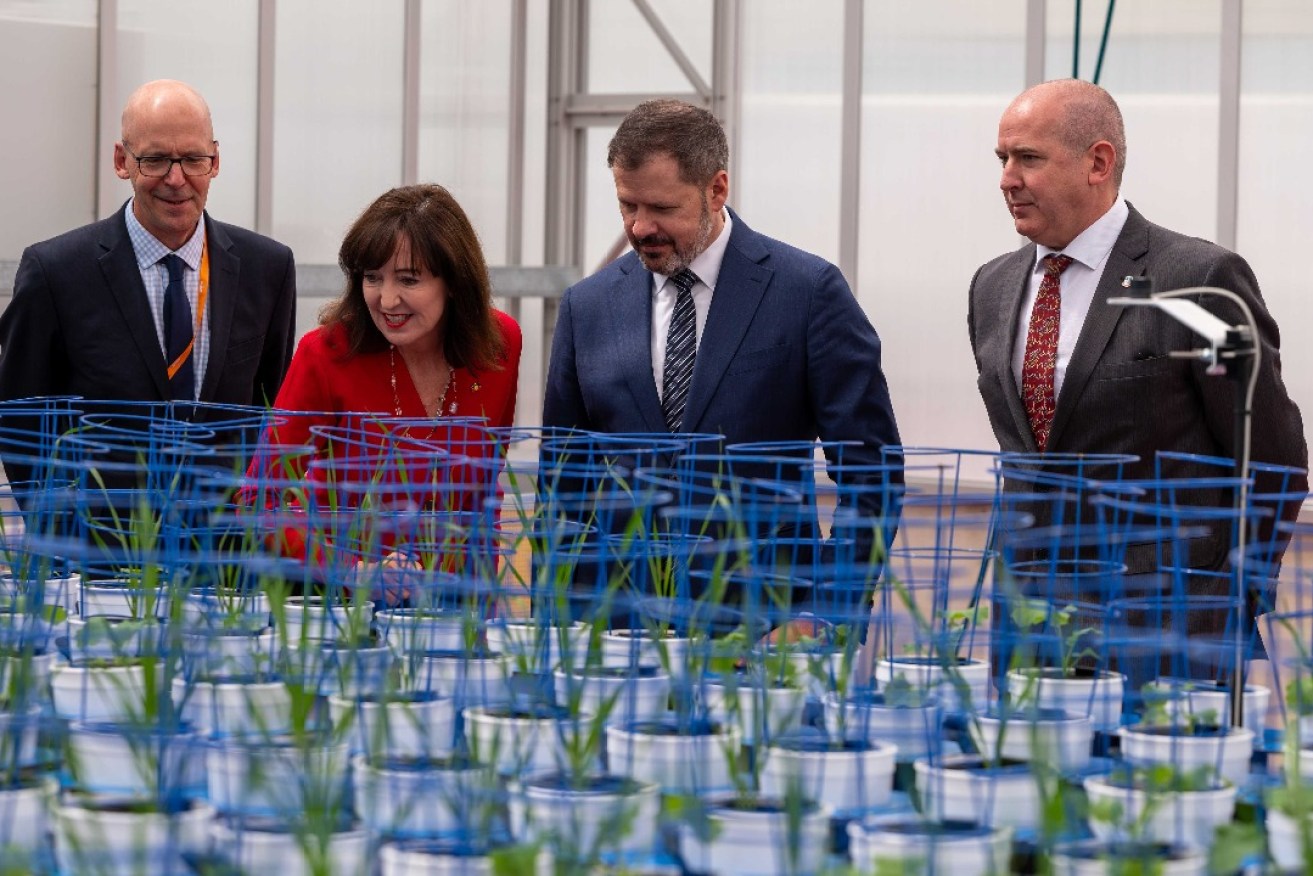Adelaide picked as epicentre in finding best crops to feed the world
Adelaide is the headquarters of a new $70 million national network leading vital research into finding drought-resistant crops to feed the world in the face of climate change.


Susan Close and Ed Husic (second right) at the research announcement. Photo: Naomi Jellicoe/supplied
Federal Industry and Science Minister Ed Husic was at the University of Adelaide’s Waite Institute this morning to announce a $60 million commitment to its research centre into plant crops, which will be expanded into a national network of nine partner nodes.
On top of the Federal Government’s $60 million, the State Government will pitch in $4.3 million and the University of Adelaide $5.6 million.
Husic said the investment would support South Australia’s strong agriculture and wine sectors.
“[It will be] all linked by a data network… making the largest integrated phenomics network in the world,” he said.
The Australian Plant Phenomics Facility expansion means crops like new wheat or oaten hay varieties can be progressed commercially far more rapidly using a unique mix of traditional plant biology, robotics and advanced data analytics.
Husic said ground-breaking work at Waite had advanced since the facility was established in 2010, with highly controlled growth environments allowing scientists to assess crop tolerance to changing climate conditions far more rapidly.
“Our produce is in huge demand all over the world, but to stay ahead of the game we need to be investing in the latest know-how in emerging fields like phenomics,” he said.
South Australia’s Industry, Innovation and Science Minister Susan Close said as climate change affects agriculture globally, it was important to invest in this research that can bypass time-intensive field studies.
Its unique laboratory conditions speed up the process in the search for drought-resistant crops.
“That’s huge for us long term,” Close said.
“We know we need to apply the best brainpower to the challenges that face us, and the headquarters of facilities is in South Australia to support Australian and international research.
“It can investigate what it means when there is less rain, what it’s like when it gets drier and hotter and what works.
“The investment enables South Australian research institutes and businesses – such as in the agriculture, food and wine sector – to translate research into innovative products and services for broad community benefit.”
The facility has already had breakthroughs around wheat and oaten hay crops.
Facility interim executive director Richard Dickmann said the research work dramatically lowers the time and cost involved with developing new crop varieties and precision ag tools, saying that kind of research is “stubbornly laborious”.
Expanding the facility would also increase its scope to collaborate with international crop research projects, including its recently signed memorandum of understanding with the German-based European Infrastructure for Plant Phenotyping.
By expanding its sites with nine new nodes it enabled researchers to study plant development across the full range of Australian growing conditions while supporting capacity building and job opportunities.




